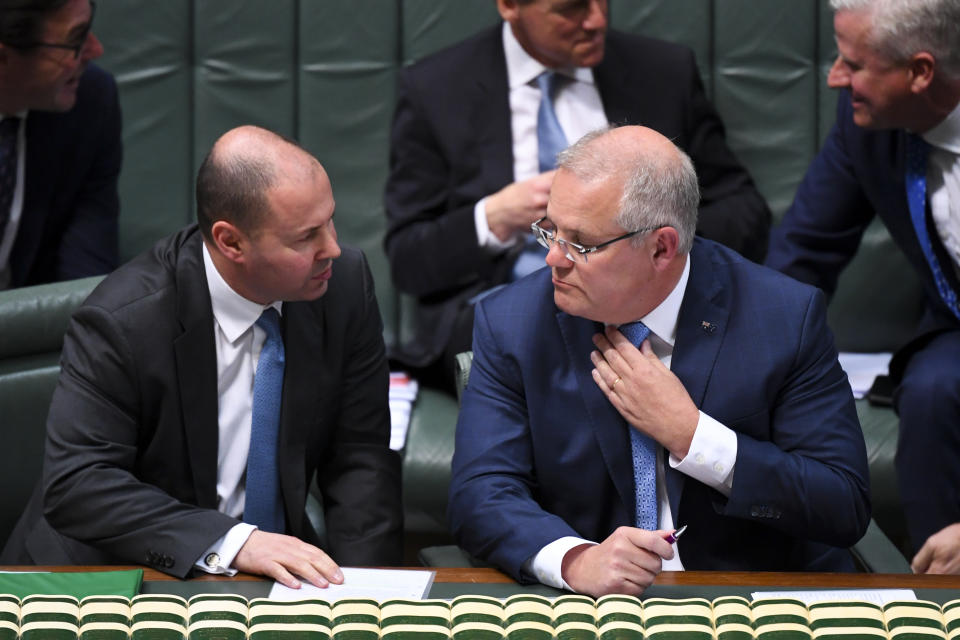Aussies need more tax cuts; RBA rate cuts can only get us so far, economists say

The Reserve Bank of Australia is doing all it can to boost the economy by slashing the national interest rate – but soon, this strategy will run out of steam.
That’s according to several prominent Australian economists that argue monetary policy – where a nation’s central bank adjusts interest rates – can only go so far in stimulating the sluggish economy.
Instead, fiscal policy – where a government adjusts spending levels and tax rates to influence the national economy – should be invoked in the form of pulling forward tax cuts, among other things.
Related story: November interest rate decision: Reserve Bank of Australia delivers verdict
Related story: 'Pressure to act': Why we might get the next wave of tax cuts ahead of schedule
Related story: The one thing to fix the Australian economy: 4 experts give their view
In a note published this morning by Commonwealth Bank senior economist Gareth Aird, personal income tax cuts are the best way the government can loosen the purse strings to support the economy.
“Monetary policy is already highly accommodative and we believe that at this point in the cycle there is both a need and desire for fiscal policy to play a greater role in boosting aggregate demand in the economy.
“The simplest, most efficient and most equitable way to boost aggregate demand from here is via personal income cuts,” he said.
Why would personal income tax cuts work?
Aussies haven’t had a tax cut in years, and in fact, we’re effectively handing over more of our salaries every year to the tax man, Aird said.
“This has been weighing on growth in household disposable income and on the capacity for households to spend,” he said.
A major centrepiece of the Federal government’s 2019 budget were the personal income tax cuts. But these are split into three stages, and unfortunately stage 2 and 3 don’t kick in until 2022-23 and 2024-25. But these should – and can – be brought forward, the CBA economist said.
“The budget could … comfortably absorb pulling the tax cuts forward to begin in 2020-21 (i.e. 1 July 2020) and the benefit to households and the economy would be immediate.”
‘More fiscal stimulus is required’: Economists show their support
The strategy of bringing forward legislated tax cuts is one that equity analysts and researchers from global investment bank Morgan Stanley predicted the Federal government might do.
“We think that further RBA rate cuts will put more pressure on the government to act, and we expect that it will bring forward Stage Two of its legislated tax plan to mid-2020, likely as part of the 2020-21 Budget in May,” Morgan Stanley analysts wrote in a note in August.
“This tax cut would be more than three times the size of the current Stage One, returning $22 billion to the household sector in the 2021 financial year and representing a 1.5 per cent boost to aggregate household income (or equivalent to the cash flow impact of 150bps of interest rate cuts).”
Speaking to Yahoo Finance, AMP Capital chief economist Shane Oliver said the rate cuts were helping, but that more was needed.
“The problem is also that less and less of each rate cut is getting passed on to customers. In my view we really need to see more fiscal stimulus now,” he said. But with no fiscal stimulus in sight, the pressure ends up falling back onto the RBA to slash rates.
Fiscal stimulus is more than just tax cuts, Oliver indicated: it would be “a bring forward of the stage 2 tax cuts, a boost to Newstart, inducements to large companies to investment more, and increased infrastructure spending where possible,” he said.
“This would give a bigger bang for the buck and could be more fairly targeted.”
Realestate.com.au chief economist Nerida Conisbee and independent economist Stephen Koukoulas agreed there was a case for further stimulus.
“Many people tend to think of monetary policy as the magic bullet to get the economy started again but there is a lot more that can be done and tax cuts are definitely part of it,” said Conisbee.
“I think it is highly likely we will start to see a stronger case for income and corporate tax rate cuts to be pulled forward.”
Koukoulas added: “There is a case for some further fiscal stimulus to ensure 2020 and 2021 locks in decent (3 per cent plus) GDP growth.
“The bottom line is: a targeted, moderate fiscal stimulus is prudent, and can probably be provided while the budget is still in surplus.”
Will tax cuts cut it?
However, Koukoulas also advised caution and to avoid locking in permanent tax cuts for a “temporary cyclical slowdown”.
The Australia Institute Centre for Future Work economist and director Jim Stanford told Yahoo Finance tax cuts have proven insufficient.
“Personal tax cuts will not do the trick. In fact we have already witnessed the impotence of tax cuts as a stimulative measure: the newly re-elected government immediately implemented tax cuts that were supposed to be a gigantic boost to confidence and spending, yet retail spending has collapsed to recession-like lows,” he said.
With wages flat, underemployment high, and confidence low, tax cuts “are not remotely enough” to boost spending.
“What Australia needs more than anything else is a wage increase. We need solid wage growth to boost consumer confidence, start to repair household finances, and stimulate new spending.”
Make your money work with Yahoo Finance’s daily newsletter. Sign up here and stay on top of the latest money, news and tech news.

 Yahoo Finance
Yahoo Finance 
